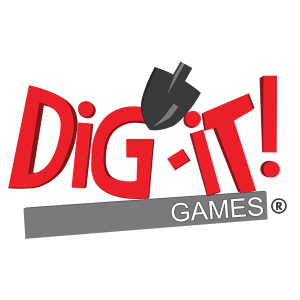Women’s History Month #3
As Women’s History Month comes to a close, I am happy to share the story of our founder and CEO:
Suzi Wilczynski
 Everything I know about entrepreneurship I learned from my mother. Ok, that may be a slight exaggeration, but the fact is, most of what I needed to know to found an educational gaming company I really did learn from my mother, without either of us truly intending it.
Everything I know about entrepreneurship I learned from my mother. Ok, that may be a slight exaggeration, but the fact is, most of what I needed to know to found an educational gaming company I really did learn from my mother, without either of us truly intending it.
My mom never developed a game, but she incorporated all the parts of good educational game design into her work teaching students with learning disabilities: building skills, measuring and rewarding progress, engaging all types of learners, and developing age-appropriate content and expectations. Her example has helped me build games that are recognized by industry experts as seamlessly blending fun and learning and that fill a gap in the market for authentic, skills-based, interactive games that are tailored for how middle school students think and learn.
I learned many things from my mother, but perhaps the most important is one of the most basic qualities of entrepreneurship: perseverance. My mom went from being a part time tutor to founding and running the Study Skills department at a prominent private school. She believed profoundly in her mission and overcame many challenges and obstacles to accomplish her goals. Her example was inspirational for me as I founded and grew my business.
I did not set out to be a business owner. I started out as a teacher looking for a tool for my middle school classroom, but I couldn’t find one. So I built it, thus starting my new career as the owner of a tech startup.
 I founded Dig-It! Games because I want to change how history and science are taught. My vehicle is largely archaeology, but my purpose is to truly make a difference in how we think about education. I chose archaeology as a tool because it’s something I’m passionate about, but also because archaeology is a combination of science and humanities. It’s my belief that if we introduce kids to the scientific process in a non-threatening way, they will have more confidence in math and science classrooms. Through archaeology, we can teach kids how to think–how to analyze, think critically, process information, communicate findings–skills that are the building blocks of all learning. Through my archaeology and history games games kids learn scientific process and historical analysis skills, while improving reading comprehension and building historical knowledge, all in a way that sparks their imagination and engages their attention. Learning should be fun–Dig-It! Games is on a mission to ensure that it is.
I founded Dig-It! Games because I want to change how history and science are taught. My vehicle is largely archaeology, but my purpose is to truly make a difference in how we think about education. I chose archaeology as a tool because it’s something I’m passionate about, but also because archaeology is a combination of science and humanities. It’s my belief that if we introduce kids to the scientific process in a non-threatening way, they will have more confidence in math and science classrooms. Through archaeology, we can teach kids how to think–how to analyze, think critically, process information, communicate findings–skills that are the building blocks of all learning. Through my archaeology and history games games kids learn scientific process and historical analysis skills, while improving reading comprehension and building historical knowledge, all in a way that sparks their imagination and engages their attention. Learning should be fun–Dig-It! Games is on a mission to ensure that it is.
To all the young women out there who want to pursue careers in STEM or who dream of being entrepreneurs: the best thing you can do is explore. Try everything. Try things that stretch your limits and push you out of your comfort zone. Try things you think you’d never in a million years have an interest in—you might be quite surprised. Explore multiple fields and experiment with new ones. Think creatively about where you fit and how to best use your skills. Not everyone is good at everything; it’s ok to decide something isn’t your thing, as long as you don’t give up on exploring other options. A key thing to remember is that failure is part of the learning process. So often we are taught that failure is a stopping point when in fact it’s actually the best way to grow. We learn so much more from failure than from success, but schools, and society, are not built around that concept. So don’t be afraid to try new things. You will fail at some of them, but then you’ll pick yourself up, evaluate what you learned and try again. The great secret of success is that it’s a process, there’s no straight line and every path is different. You may have to try a lot of things and fail often to find your path, but as long as you keep at it, consider yourself a success.

